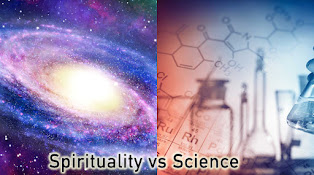Visualization in Manifestation: Unlocking the Power of the Mind
Introduction
Manifestation, the process of bringing your desires and goals into reality, has gained immense popularity in recent years. At its core, manifestation is about aligning your thoughts, beliefs, and actions with your desired outcomes. One of the most powerful tools in the manifestation toolkit is visualization. This article explores how visualization works in manifestation, the science behind it, and practical techniques to harness its power.
Understanding Visualization
Visualization is the practice of creating vivid mental images of your desired outcomes. It involves using your imagination to see, feel, and experience your goals as if they have already been achieved. By engaging multiple senses and emotions, visualization helps to create a powerful mental blueprint of what you want to manifest.
The Science Behind Visualization
1. Neuroscience and Brain Activity: Visualization activates the same neural pathways in the brain as actual experiences. When you vividly imagine a scenario, your brain treats it as a real experience. This phenomenon is known as "mental rehearsal" and has been extensively studied in neuroscience. By repeatedly visualizing a goal, you strengthen the neural connections associated with that goal, making it more familiar and achievable to your brain.
2. The Reticular Activating System (RAS): The RAS is a network of neurons located in the brainstem that filters incoming information and determines what is important. When you consistently visualize your goals, the RAS starts to prioritize information and opportunities related to those goals. This heightened awareness increases your chances of noticing and seizing opportunities that align with your desires.
3. Emotional and Physiological Responses: Visualization can evoke strong emotional responses. By imagining the joy, excitement, and satisfaction of achieving your goals, you create a positive emotional state that reinforces your commitment and motivation. These emotions also trigger physiological responses, such as increased heart rate and energy levels, which prepare your body for action.
How Visualization Enhances Manifestation
1. Clarifying Goals and Desires: Visualization helps you gain clarity about what you truly want. By creating detailed mental images of your goals, you refine and specify your desires. This clarity is essential for effective manifestation, as vague or conflicting intentions can hinder progress.
2. Building Belief and Confidence: Seeing yourself successfully achieving your goals in your mind's eye boosts your belief in your abilities. This increased self-confidence is crucial for overcoming self-doubt and taking inspired action. When you believe in the possibility of your dreams, you are more likely to persevere in the face of challenges.
3. Aligning Thoughts and Emotions: Visualization aligns your thoughts and emotions with your desired outcomes. By consistently focusing on positive images and feelings, you shift your mindset from scarcity and doubt to abundance and certainty. This alignment creates a powerful energetic resonance that attracts opportunities and resources in harmony with your goals.
Practical Visualization Techniques
1. Vision Boards: Create a vision board by collecting images, quotes, and symbols that represent your goals and aspirations. Arrange them on a board or digital platform and place it where you can see it daily. Regularly engaging with your vision board reinforces your intentions and keeps your goals at the forefront of your mind.
2. Guided Imagery: Use guided imagery recordings or scripts to lead yourself through a visualization exercise. These scripts often involve relaxing and closing your eyes while imagining specific scenarios related to your goals. Guided imagery helps you focus and deepen your visualization practice.
3. Meditative Visualization: Incorporate visualization into your meditation practice. After reaching a relaxed state, spend a few minutes vividly imagining your desired outcomes. Engage all your senses and emotions, and let yourself fully immerse in the experience. This practice enhances both your meditation and visualization efforts.
4. Daily Visualization Routine: Set aside a few minutes each day for focused visualization. Find a quiet space, close your eyes, and visualize your goals as already accomplished. Feel the emotions associated with your success and repeat this practice consistently. Over time, this daily routine strengthens your manifestation efforts.
Visualization is a powerful tool that can significantly enhance your manifestation practice. By creating vivid mental images of your desired outcomes, you engage your brain, emotions, and physiology in the pursuit of your goals. The science behind visualization underscores its effectiveness, and practical techniques can help you harness its power. As you integrate visualization into your manifestation routine, remember to stay consistent, believe in your abilities, and remain open to the opportunities that come your way. With dedication and practice, you can transform your dreams into reality.











